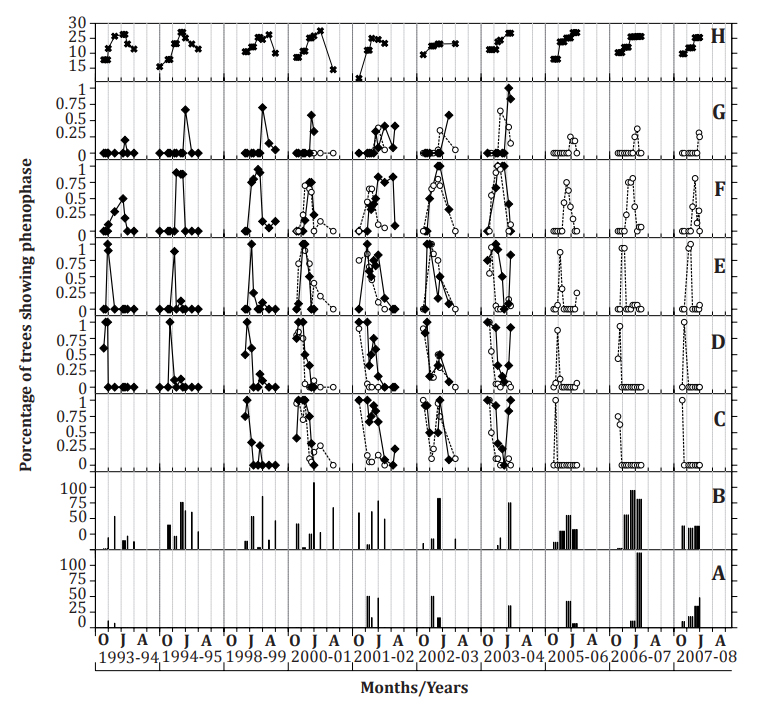Spatial and temporal synchronicity in the phenological events of Prosopis flexuosa in the Central Monte Desert
Palabras clave:
patrones fenológicos, producción de frutos, intensidad fenológica, patrón de floración, sincronización, freatófito facultativoResumen
Some desert plant species are capable of using underground water and are therefore independent of rainfall events. Species of the genus Prosopis are thought to be facultative phreatophytes, since they have deep and shallow roots that allow them explore water from underground layers and from sub-surface soil horizons. We created a seven-year series of phenological data in order to make comparisons between two natural Reserves of Mendoza province (Ñacuñán and Telteca) with different rainfall regimes and accessi-
bility of Prosopis flexuosa trees to water. Percentage of trees in each phenological phase, date of maximum expression, and intensity of each phenological phase were recorded. We found that the trees had a similar date for leafing and flowering across years and sites, even with very different rainfall regimes. However, pod maturation dates varied significantly, ocurring 37 days sooner in Telteca. A second peak of leaves and flowers were recorded at both sites, being highly variable and non-synchronous in most cases, suggesting a quick response to rainfall events. The ability of P. flexuosa to respond to unpredictable rainfall pulses could be an important adaptation to keep ecosystem services functioning, even though associated pollinators and seed dispersers could get decoupled from changes in phenological events.
Descargas

Descargas
Publicado
Cómo citar
Número
Sección
Licencia
Aquellos autores/as que tengan publicaciones con esta revista, aceptan las Políticas Editoriales.










.jpg)




